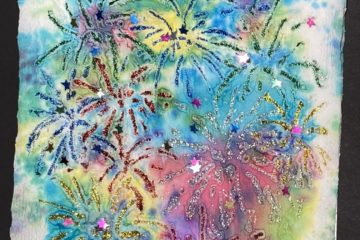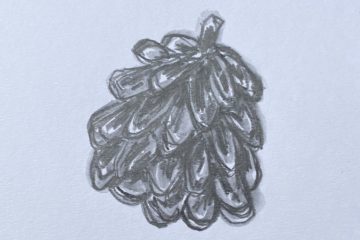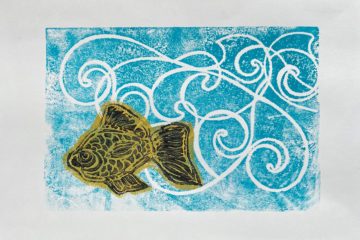The other day I was experimenting with a ruling pen, India Ink, a thin paint brush, and some 4X4 squares of multipurpose paper. Usually, I go into my artistic practice with some idea of what I’d like to do and am often using my time as a trial for one of my upcoming art classes. But this time was different; this was total nonobjective play time.
As I went along with my organic black lines on white paper, I was seriously enjoying the contrast and the depth of the different lines. One seemed to almost move behind the other. I kept at it and did many practice pieces, just to continue having fun with it.
During my trial runs I found that one particular creation reminded me of an interesting tile I’d seen before. It was exactly what I was looking for, even though I didn’t start out looking for anything.
Now, you know what I did next. I went ahead and complicated things for myself with my new concept by adding more. I wanted to match one piece to the other and create a diptych, or two panels of art that combine to make one piece. So, I went to work developing a similar design/flow of my chosen piece and continuing, without touching, this pattern onto another square.
Getting ready to go, I cleaned my tools and set up my workspace for some non-practice, serious work. I brought back my ruling pen, which provided thin, crisp lines. The paint brush was more troublesome, which I expected from my prior experience with the trials, yet it allowed for such depth and interest that I needed in the piece.
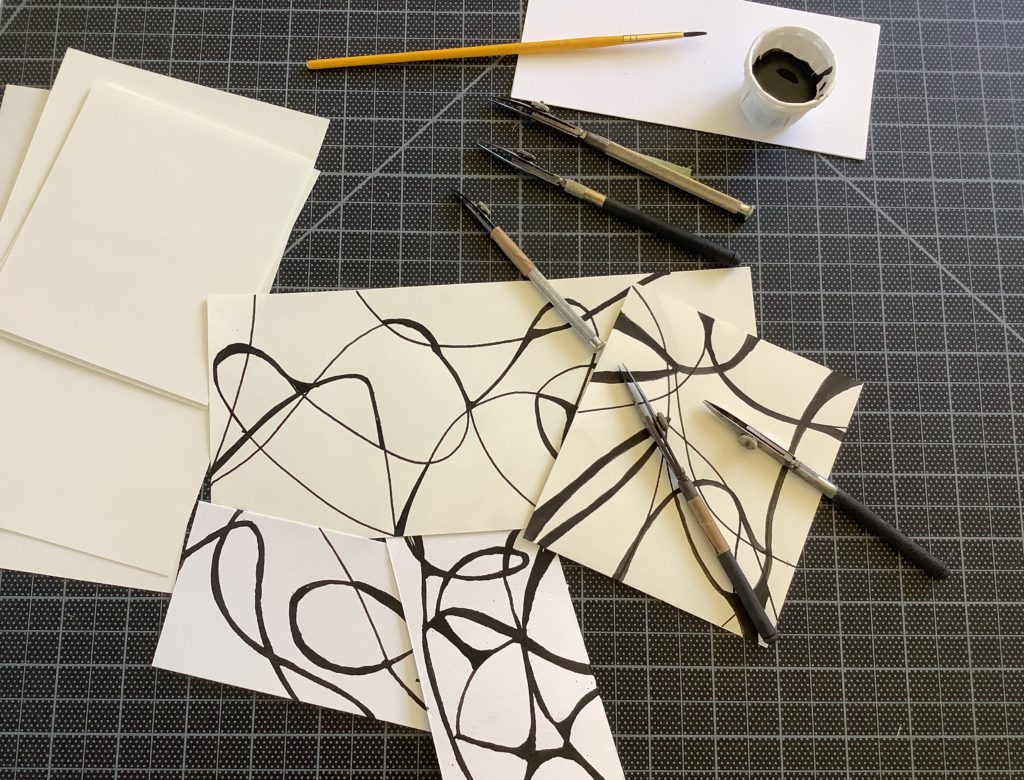
In order to really feel the fluidity of what I was going for, I kept my mind and body relaxed. You can’t hear it in the video above, but I was playing some of my favorite mellow jazz music, which really sets the mood for my free-flowing art. This helped keep the intended design organic, not choppy.
What you can see in the video is how I set my chosen design, the first panel, directly next to my blank square to ensure the implied connections of the lines would be accurate. When making any sort of multi-panel artwork, I recommend keeping the pieces close together while working on the edges that are intended to be next to each other. It will allow for a clearer harmony between the panels and ease of seeing it as one completed painting or drawing or mixed media piece.
Now was the time to take everything I had learned previously and put it to work, but, whether filming the creation or not, it’s always a gamble as to how an artistic idea pays off on paper.
Lucky for me, it was a success! Here is the final piece:
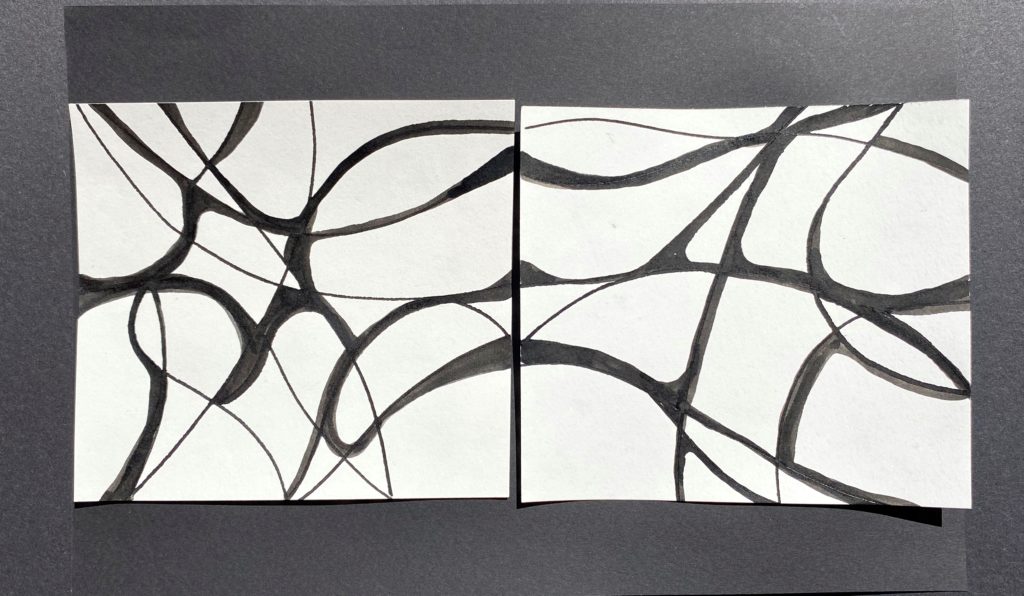
I underestimated the size of black paper I needed to mount this piece, so they are a little closer together than I would like, but I still enjoy how it came out in the end. If I want, I can always remove the panels from the backing and mat, mount, or frame it differently or create another set of panels for a new artwork in the same style.
But all in all, I believe this is another example where the Miss Linda theory of experiment and practice came to life! Let your eyes see in their own way so your mind can process things in your own way. Be open, learn from mishaps, incorporate your experience in all things, in your way.
